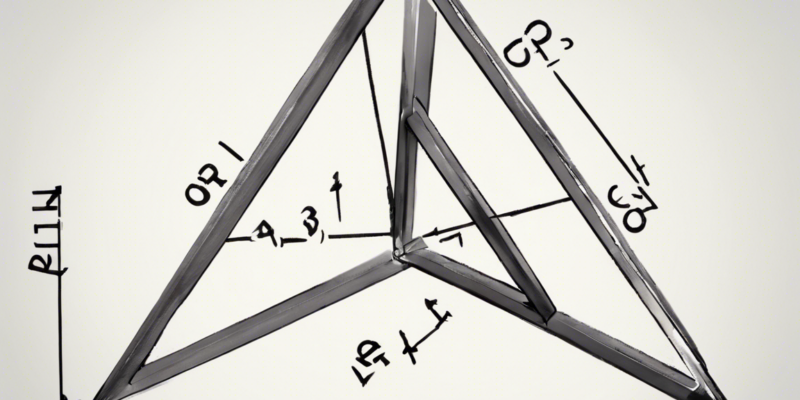Triangles are one of the fundamental shapes in geometry, with properties and theorems that can be fascinating to explore. One such property that is essential to understand is the Exterior Angle Property. In this article, we will delve into what exterior angles are, how they relate to the interior angles of a triangle, proofs of the exterior angle property, and practical applications of this concept in real-life scenarios.
Understanding Exterior Angles
An exterior angle of a triangle is formed when one side of the triangle is extended. In simpler terms, it is the angle that is formed between one side of a triangle and the extension of an adjacent side. Every triangle has three exterior angles, one at each of its vertices.
Relationship between Exterior and Interior Angles
The key property to note about exterior and interior angles is that they are supplementary. This means that the exterior angle at a vertex of a triangle is equal in measure to the sum of the two non-adjacent interior angles at that vertex. Mathematically, this can be expressed as:
[ \text{Exterior Angle} = \text{Sum of Interior Angles} ]
Proofs of the Exterior Angle Property
- Algebraic Proof: Let the three interior angles of a triangle be ( A, B, ) and ( C ). The sum of the angles of a triangle is always 180 degrees, so we have:
[ A + B + C = 180^{\circ} ]
Now, consider the exterior angle ( D ) opposite the interior angle ( A ). It forms a supplementary angle with ( C ), so we get:
[ D + C = 180^{\circ} ]
[ D = 180^{\circ} – C ]
Similarly, the exterior angle ( E ) opposite the interior angle ( B ) satisfies:
[ E = 180^{\circ} – A ]
Adding these two equations, we get:
[ D + E = (180^{\circ} – C) + (180^{\circ} – A) = 360^{\circ} – (A + C) = B ]
This algebraic proof demonstrates the relationship between the exterior angle and the sum of the two non-adjacent interior angles.
- Euclidean Proof: Another way to visualize the exterior angle property is through a geometric construction. By extending the side of a triangle, you can see that the exterior angle is indeed equal to the sum of two interior angles.
Practical Applications
Understanding the exterior angle property is crucial in various fields, including engineering, architecture, and navigation. Architects use this concept when designing structures to ensure stability and balance in triangular elements. Engineers apply it in structural analysis, while navigators use it for precise travel direction calculations.
Frequently Asked Questions (FAQs)
- What is the exterior angle of a triangle?
-
An exterior angle of a triangle is the angle formed between one side of the triangle and the extension of an adjacent side.
-
How is the exterior angle related to the interior angles of a triangle?
-
The exterior angle at a vertex of a triangle is equal in measure to the sum of the two non-adjacent interior angles at that vertex.
-
Why is the exterior angle property important?
-
The exterior angle property is important for understanding the relationships between angles in a triangle and has practical applications in various fields.
-
Can exterior angles be greater than 180 degrees?
-
No, exterior angles of a triangle are by definition greater than 0 degrees and less than 180 degrees.
-
How can I use the exterior angle property in real-life scenarios?
-
You can apply the exterior angle property in architecture, engineering, navigation, and any field that involves geometrical calculations.
-
Is there a formula to calculate exterior angles?
-
The exterior angle of a triangle can be calculated by subtracting the corresponding interior angle from 180 degrees.
-
Are exterior angles always equal in a triangle?
-
No, exterior angles of a triangle are not always equal. They are equal to the sum of the two non-adjacent interior angles at the same vertex.
-
Can you have a triangle with all exterior angles?
-
No, a triangle by definition has three interior angles that sum up to 180 degrees. Exterior angles are formed by extending the sides of a triangle.
-
How does the exterior angle property relate to the interior angles theorem?
-
The exterior angle property complements the interior angles theorem by providing a deeper insight into the relationships between angles in a triangle.
-
Can the exterior angle property be extended to other polygons?
- Yes, the concept of exterior angles and their relationship to interior angles can be extended to other polygons, not just triangles.
In conclusion, the Exterior Angle Property is a fundamental concept in geometry that enhances our understanding of the relationships between angles in triangles. By grasping this property and its proofs, you can apply it to various practical scenarios, making it a valuable tool in problem-solving and analysis.

